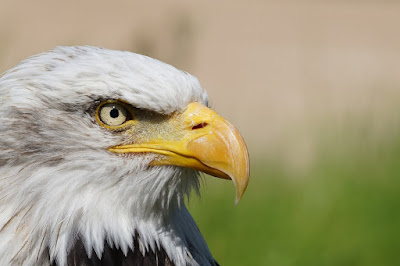Back when the Bald Eagle was chosen as our national symbol (Ben Franklin wanted it to be the wild turkey), they were nearly everywhere in the country.
Bald Eagles always stood out as huge, majestic, gorgeous birds, (up to 14 pounds and an 8-foot wingspan) who patrolled our waterways looking for fish to eat. (Never mind for the moment that one of the eagle's main approaches to obtaining food was to steal it from Ospreys after they'd done the hard work of catching the fish!)
When DDT was first invented in the late 19th century, it became a popular insecticide. As is typical, no one paid much attention at first to potential side effects. Unfortunately, DDT was responsible for decimating bird populations. Bald Eagles were among many species that nearly went extinct. (Not to mention that mosquitos had developed significant resistance to the poison!)
After much argument and hostility toward environmentalists, DDT was eventually banned in 1972. (Why is it always so hard to protect the environment?)
By the time DDT was banned, Bald Eagles had been killed in such great numbers, their survival was touch-and-go.
The first time anyone paid attention to Bald Eagles in the Tahoe Basin, there were only a couple of them.
Fast forward several decades and their numbers began climbing. In 2017, the Tahoe raptor count showed 27 Bald Eagles. In 2021, 42 Bald Eagles!
Our beautfiful national bird is back. Everyone who spends much time hiking in Tahoe has seen them.
Hurrah for the eagles!



No comments:
Post a Comment